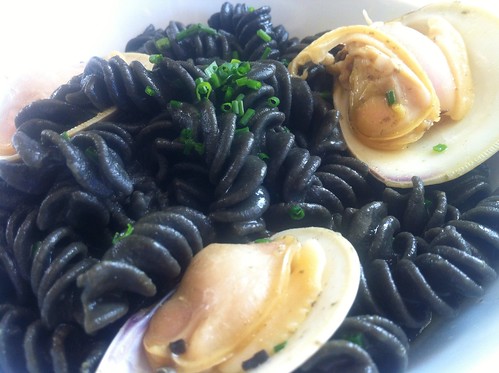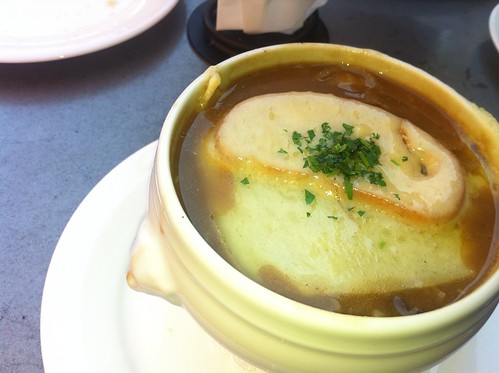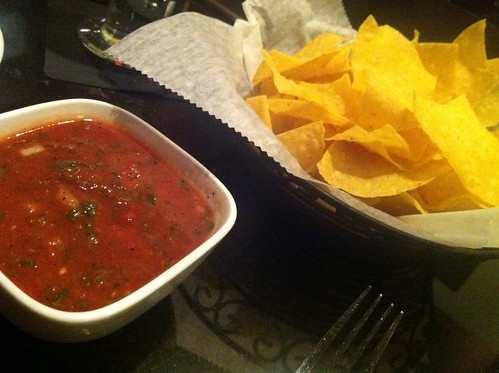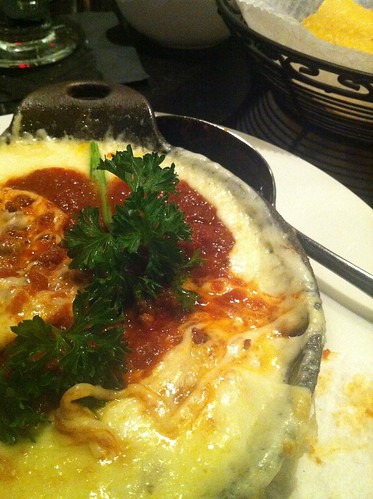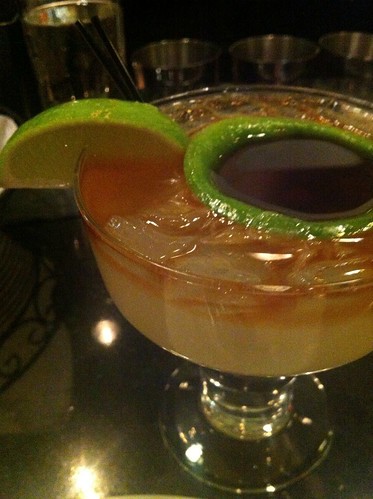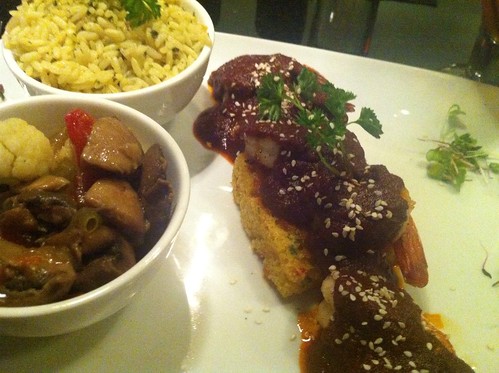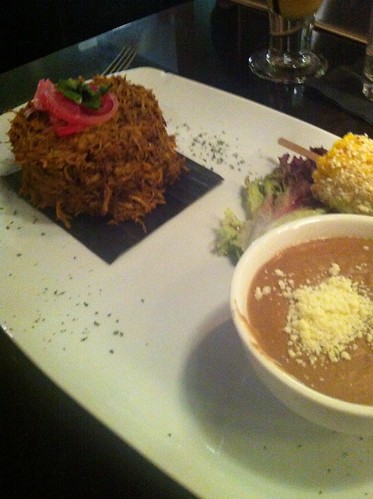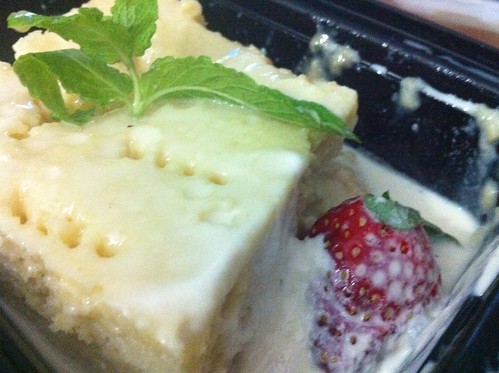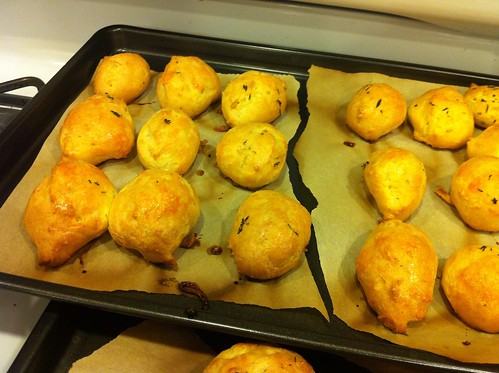I kicked off Restaurant Week 2012 with a visit to Clink, housed in the Liberty Hotel. This is a very cool space because it was once a jail! Some of the original bars are still on the windows, but the dining room at Clink is bright and lovely. As an appetizer, I opted for the Seafood Chowder with Brown Bread Croutons. For my main course, I chose the Black Pasta with Local Clams, Saffron Butter and Green Garlic. Finally, for my dessert, I ordered the Taza Chocolate Ice Cream Float. My favorite part of this meal, and the reason I chose Clink as my first visit during Restaurant Week, was the pasta main course. Black pasta is made by using squid ink as a natural food coloring. Squid ink is the only part of a squid I can stand, and I really enjoy black pasta. The sauce on this dish was salty and garlicky and delicious, and the pasta was cooked perfectly. It really was the perfect size and the clams were juicy and cooked to perfection!
Moving on to the second lunch of the week, I visited Smith and Wollensky with a co-worker and friend of mine. I started with Wollensky's Famous Split Pea Soup with Croutons, followed by Wollensky's Butcher Burger, topped with aged cheddar, caramelized onions, lettuce, tomato, and the restaurant's own famous steak sauce mayonnaise. I polished the meal off with a giant piece of Coconut Cake, with Passion Fruit Sauce (which I had them package up for later - I was full!) They cook their meat very specifically to order, so when I said I would like my burger cooked Medium Rare, it was spot on. Most places don't get it as spot-on as Smith and Wollensky! The burger was so huge, I could hardly finish half of it, and the cole slaw that came on the side was perfectly seasoned!
The first dinner of the week, with a group of friends that we always meet up with at least twice for Restaurant Week, was at Asana. I was not as impressed with my meal here, unfortunately. There were a few highlights, and I will tell you about them, of course...but I'll gloss over the rest. I hate to say anything negative. I ordered the Chicken Consomme, Roasted Statler Chicken, and Cherries and Lemon Whipped Cream. The highlight of this meal for me was the dessert, and I don't say that very often. The pastry chef at this restaurant is brilliant, and should have their own space, I believe. I would certainly frequent a dessert shop if this was the caliber of options I was given! The Cherries and Lemon Whipped Cream were garnished with Lemon Juniper (Gin) foam, Almond Sponge Cake, and Vanilla White Chocolate Sorbet. The presentation of this plate was incredible, and I'm sorry that my picture does not do it justice. My favorite part: the cherry sauce was applied in the shape of an actual cherry, and then topped in a small piece of gold leaf, leaving the impression that it was an actual cherry on my plate, not just a glob of cherry sauce. The chocolate curly-cue on top sealed the deal for me!
My final meal of the first week of Restaurant Week was my friend's choice. Ladali is moving in a few days so we had to make her last Restaurant Week here in Boston a special one! She chose to try the Marliave, a place that has a GREAT selection when it comes to Restaurant Week! I started with Henry's Soup, a classic French Onion soup topped with Gruyere, with a twist: short ribs! This was a tasty, and satisfying soup with a beautiful sheen to it. It was thicker than most French Onion soups, and somehow heartier - so hearty, in fact, that I couldn't finish my main course! Moving on to the Scrambled, which is scrambled eggs, farmhouse cheeses, black truffle butter, house cut fries and toasted bread. This was a rich dish, and one that I really could not finish. It was so tasty though...it really hit the spot! I didn't feel like a rich dessert after what I had already ordered, so I opted for the Three Cheese - a platter of three cheeses, walnuts, lavender honey and toasted brioche. The platter came with a delicious Gorgonzola, and two others that I can no longer remember, but everything on the plate melded so well together, and it was the perfect end to a delicious lunch!
Now, do you see how there was little time for blog posts? My goodness, I was busy! I always make the effort to try new places when Restaurant Week is upon us, and this time is no different! Stay tuned next weekend for the second part of this post - I've got a week to go! I'm also going to try to get to the next lesson in The Professional Chef at some point this week! I'll get back on track soon, I promise, dear readers!
